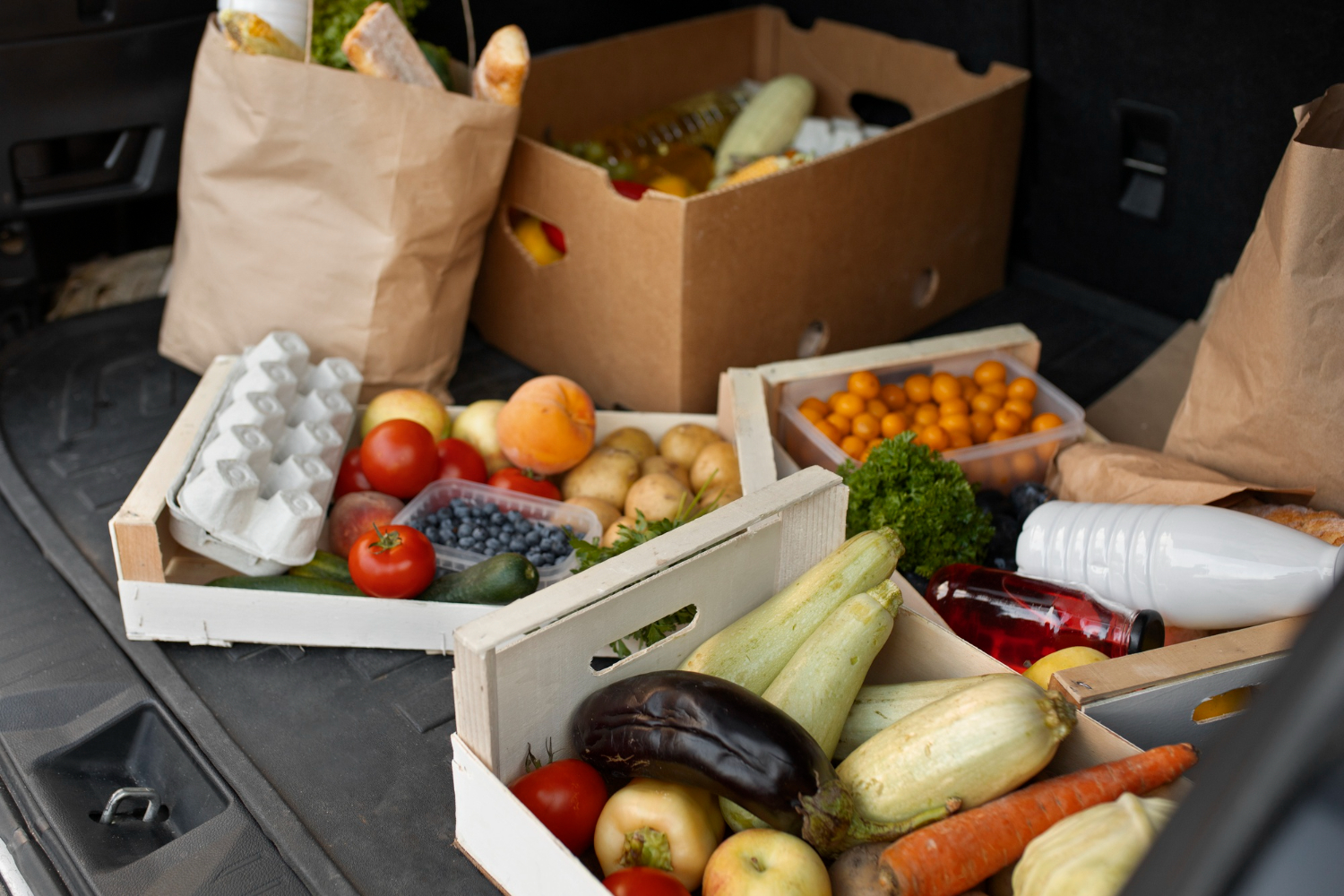In December 2024, the latest Consumer Price Index (CPI) report showed that grocery prices (food-at-home) went up by 1.8% compared to the previous year. That’s a slight increase from November’s 1.6% rise. At the same time, restaurant prices (food-away-from-home) climbed by 3.6%, staying consistent with the previous month.
This marks the 21st month in a row where restaurant prices have grown faster than grocery prices. However, the gap between the cost of dining out and buying groceries has shrunk to its smallest margin since April 2023. That means the difference between cooking at home and eating out is getting smaller.
On a broader scale, the overall CPI went up by 0.4% month-over-month, bringing the annual inflation rate to 2.9%. This shows that inflation is still a factor shaping how people spend their money, affecting both restaurants and household budgets.
What Restaurant Owners Should Do
As the cost difference between grocery shopping and eating out gets smaller, restaurant owners need to find ways to stay competitive and keep customers coming in. Here’s what you can do:
Offer More Value
Customers are more selective with their spending, so offering meal deals, loyalty programs, and special promotions can help keep diners coming back. Value doesn’t just mean lowering prices; it also means creating an experience that feels worth the cost. Limited-time deals, discounts for frequent customers, and bundled meals can encourage repeat business.
Focus on the Experience
Great food is important, but so is the overall dining experience. Improving service, atmosphere, and hospitality can help restaurants stand out. A well-trained staff that provides excellent customer service can make a significant difference in retaining customers. Additionally, creating a welcoming ambiance with music, decor, and comfortable seating can enhance the dining experience and encourage guests to return.
Optimize Menus
Restaurants can improve profitability by focusing on high-margin dishes, seasonal specials, and portion control to manage costs without sacrificing quality. Eliminating underperforming menu items and incorporating ingredients that are cost-effective and widely available can also improve efficiency. Strategic menu pricing and engineering can help restaurants maintain profitability while offering perceived value to customers.
Leverage Technology
Digital tools like online ordering, reservation systems, and delivery services can help restaurants meet consumer demand and improve efficiency. Contactless payments, digital menus, and automated ordering systems can enhance the customer experience. Many consumers prefer the convenience of ordering online, so ensuring a seamless digital experience is essential for attracting and retaining customers.
Manage Costs Wisely
Cutting food waste, negotiating better supplier deals, and optimizing staffing can help restaurants keep costs in check while maintaining profitability. Training staff to minimize waste, investing in inventory management software, and purchasing ingredients in bulk can lead to cost savings. Implementing labor management strategies to balance staff efficiency with customer demand is also crucial.
Showcase What Makes You Unique
Whether it’s locally sourced ingredients, creative cuisine, or a special ambiance, restaurants should highlight what sets them apart. Storytelling through marketing and branding can create an emotional connection with customers. Unique experiences, such as themed dining nights, chef’s specials, or farm-to-table ingredients, can differentiate a restaurant from competitors.
How Consumer Behavior is Changing
As food prices fluctuate, people are adjusting their habits. More consumers are cooking at home to save money, but convenience remains a priority, leading to a rise in takeout and delivery orders. To stay relevant, restaurants should consider offering affordable meal bundles, family-style takeout options, and limited-time discounts.
Engaging with customers on social media and using digital marketing can also help restaurants maintain strong connections with their audience and build loyalty. Personalized email campaigns, targeted social media ads, and influencer partnerships can increase visibility and attract new customers.
The Importance of Customer Loyalty
Building customer loyalty is now more crucial than ever. With the narrowing price gap between eating at home and dining out, customers need a strong reason to choose a restaurant over their kitchen. Implementing a personalized loyalty program can create incentives for repeat visits. Offering discounts to frequent customers, exclusive menu previews, or members-only events can enhance customer retention.
Additionally, transparency and authenticity go a long way in building trust. Consumers are more likely to support restaurants that align with their values. Whether it’s sustainability, sourcing local ingredients, or supporting charitable initiatives, restaurants should make an effort to communicate their mission and vision to their customers.
Expanding Revenue Streams
Many restaurant owners have started diversifying their income streams to keep up with changing consumer demands. Some have introduced meal kits, where customers can cook restaurant-quality meals at home. Others have explored selling specialty sauces, baked goods, or branded merchandise. These strategies not only create additional revenue but also strengthen brand loyalty, giving customers a way to enjoy a restaurant’s offerings outside of a traditional dining experience.
Additionally, catering and private dining services can be profitable. Offering catering for corporate events, weddings, and private gatherings can help boost revenue. A well-structured catering menu and a seamless ordering process can attract businesses and individuals looking for convenient and high-quality food options.
Marketing Strategies to Stay Ahead
Marketing plays a significant role in a restaurant’s success. With more consumers relying on social media and online reviews to make dining decisions, restaurants should invest in their digital presence.
Engaging Content
Posting high-quality images of dishes, behind-the-scenes videos, and chef interviews can create excitement and engagement. Consumers love visually appealing content, so investing in professional food photography can enhance a restaurant’s online presence.
Influencer Partnerships
Collaborating with local food bloggers and social media influencers can drive more foot traffic. Reviews and recommendations from trusted sources can influence dining decisions. Hosting influencer events or offering complimentary meals to popular food bloggers can generate buzz and attract new customers.
Customer Engagement
Responding to online reviews, running social media contests, and encouraging user-generated content can help build a loyal online community. Engaging with customers through direct messages and comments shows that the restaurant values their feedback and patronage.
Email and SMS Marketing
Sending personalized promotions, birthday discounts, and event invitations can encourage repeat visits. SMS marketing, in particular, has high open rates and can be an effective way to communicate time-sensitive offers.
The Future of Dining
As inflation continues to affect food prices, the restaurant industry must be prepared for ongoing shifts. While some customers may prefer home-cooked meals, others will still seek the social and experiential benefits of dining out. Restaurants that focus on value, experience, and convenience will be in the best position to thrive.
Adapting to trends like ghost kitchens, AI-driven customer service, and automation in food preparation can provide restaurants with a competitive edge. The future of dining will rely on innovation, adaptability, and a deep understanding of consumer needs.
Conclusion
With inflation and shifting consumer behavior shaping the industry, restaurant owners need to be adaptable and forward-thinking to remain successful. Economic pressures and changing dining preferences mean that businesses must strike a delicate balance between offering value and maintaining profitability. By focusing on delivering exceptional customer experiences, optimizing menu pricing, and implementing smart cost-management strategies, restaurants can navigate these challenges effectively.
The narrowing price gap between dining out and cooking at home presents both hurdles and opportunities. While some consumers may opt to eat at home more often, those who choose to dine out will seek compelling reasons to do so—whether it’s unique culinary experiences, superior service, or added convenience. Restaurants that embrace innovation, leverage technology, and respond proactively to evolving consumer expectations will be the ones that not only survive but thrive in this dynamic landscape. Adaptability, creativity, and a deep understanding of customer needs will be the key differentiators in a competitive market.
Reference: https://www.nrn.com/
Florida Food Handler Certificates
Avoid fines by ordering your Florida Department of Business and Professional Regulation-approved Food Worker Program certificates today. They’re available for just $4 each. Program #5552749.
Place your order online here. For additional information, you can call (561) 703-7196.
***Please note that the insightful and engaging content provided on our platform is crafted by our dedicated Marketing Department’s content writing team. While Ken Kuscher is the esteemed figure and expert within our industry, the articles and blog posts available are not personally authored by Ken.





